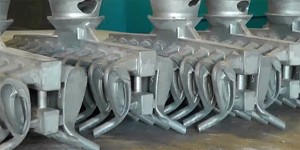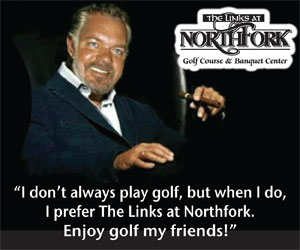Game Improvement vs Improve Your Game
By Jim McNaney
Recently I had one of the most interesting conversations with a student I’ve had in many, many years. I’d even say it was one of the most confounding conversations in my career. Not that the words being used were confusing but rather the line of thinking presented me with a conundrum so massive I actually got a migraine.
It started out innocently enough. My student asked me about the difference between forged and cast irons and was there any reason to use one over the other. Innocent enough question. So I started explaining the differences in how they are made and how they feel comparatively.
Cast irons are usually made from harder medals that are heated to a molten state and then poured in cast molds of each individual iron. When the metal cools, it is set to the specifications of the mold. Most if not all manufacturers produce cast clubs. The advantages to the manufacturer are many; they are more cost efficient to make, the heads produced can have smaller tolerances and variations and it allows designers to create more innovative weighting to allow for better, more consistent performance without requiring the player to have the skill of a PGA Tour Professional.
Generally, what is sacrificed is what golfers call “feel.” That is to say, when you hit a cast club slightly off center it does not “feel” all that much different from a center strike. Also, mishits generally have less loss of energy transfer meaning the ball flies more accurately even if the strike is not exactly precise.
Forged clubs are made from softer medals. These medals are heated not to a molten state but just to the point of pliability. Once in that soften state, the medal is pounded into the form of an iron head with tremendous force. This compacts the medal and gives the club more responsiveness. Said simply, when you hit a forged club right on the “sweet spot” the player feels…well…nothing. That smooth, effortless sensation of softness is one that is hard to duplicate and one that, once felt, can be intoxicating.
For the most part, forged clubs are more expensive to make and offer less forgiveness to the average player.
None of the conversation is all that unusual at this point. Then it happens. My student says to me, “Why on earth would I want a club that helps me if I do something wrong. I want a club that, if I mess up, let’s me know I screwed up.”
At first, I thought he had misspoken so I said, “You mean you do want a club that helps you out when you are less than perfect, right?”
“No…absolutely not!” he shot back. “I want to get better at golf. If I made a bad swing I should pay the price. It does me no good to score well and not have my swing be any good.”
That’s when the migraine started setting in.
You see, I’ve spent the last two decades helping people play better golf. While that does include helping them find a swing that they can repeat and send the ball in the direction they intend, I never imagined that someone…anyone…really wanted to be punished for not being perfect.
I’ve had students in the past tell me that they wanted forged clubs for more “feel” but I have never had anyone tell me they actually want to be punished.
Then it hit me. There seems to be two types of golfers; those that want to improve their game and those that want to improve themselves.
It is said that golf imitates life. It’s a game of integrity and honor. It’s played by yourself and, for the most part, it is a competition between you and…well… you. You compete against how you performed previously. As in life, we are supposed to improve ourselves each day.
While I am all for self-improvement, I believe most every day golfers need to realize one basic fact. We are NOT world-class athletes. Professional golfers are, in fact, Olympians!
This brings me back to the two types of golfers. In reality we are all probably a little bit of both but there are those that are unashamedly on opposite sides of the spectrum.
The player that wants to improve their game generally will do ANYTHING to improve their scores. GPS, the latest driver, ultimate game improvement irons, that ball you see on late night TV that claims to be so long it’s “illegal.” This person has every DVD ever produced, every book ever written and has 8 magazine subscriptions. This person has taken every Short Game Guru 3-Day School and owns just about every training aid on the market.
In my opinion there are many more of these types of golfers. I see them every day in my full time job as a golf instructor. Their commitment to improvement is admirable and the passion they show for learning is contagious. These are my people…or so I thought.
For the first time I was confronted with the type of person that wanted to improve themselves. They wanted to KNOW they were getting better at striking the ball. They would not take shortcuts and employ cast irons with a sweet spot the size of Montana. To them, the sting of an off-center hit was a sign that they needed to do more to get better and the “feeling of greatness,” as Moe Norman called it, of a perfectly struck ball was something to aspire to.
I suddenly saw the beauty of their endeavor. To them, the game (and consequently their improvement in the game) was not about punishment for a bad shot, but rather the never-ending quest for betterment. It was noble…almost heroic and certainly romantic; improvement for improvements’ sake.
Then my student hit three toe shots in a row, looked me square in the eyes and said, “When can we set up a fitting for some cast irons?”
Where’s my Advil?






























